CIMA CO1 Official Learning System - Fundamentals of Management Accounting
Подождите немного. Документ загружается.

STUDY MATERIAL C1
210
SPECIFIC ORDER COSTING
8.2.1 Job cost sheets and databases
The main feature of a job costing system is the use of a job cost sheet or job card which is
a detailed record used to collect the costs of each job. In practice this would probably be
a fi le in a computerised system but the essential feature is that each job would be given a
specifi c job number which identifi es it from all other jobs. Costs would be allocated to this
number as they are incurred on behalf of the job. Since the sales value of each job can also
be separately identifi ed, it is then possible to determine the profi t or loss on each job.
The job cost sheet would record details of the job as it proceeds. The items recorded
would include:
●
job number;
●
description of the job; specifi cations, etc.;
●
customer details;
●
estimated cost, analysed by cost element;
●
selling price, and hence estimated profi t;
●
delivery date promised;
●
actual costs to date, analysed by cost element;
●
actual delivery date, once the job is completed;
●
sales details, for example, delivery note no., invoice no.
An example of a job cost sheet prepared for a plumbing job is shown in Figure 8.1 . This
job would have been carried out on the customer’s own premises. The sheet has a separate
section to record the details of each cost element. There is also a summary section where
the actual costs incurred are compared with the original estimate. This helps managers to
control costs and to refi ne their estimating process.
8.2.2 Collecting the direct costs of each job
(a) Direct labour
The correct analysis of labour costs and their attribution to specifi c jobs depends on the
existence of an effi
cient time recording and analysis system. For example, daily or weekly
timesheets may be used to record how each employee’s time is spent, using job numbers
where appropriate to indicate the time spent on each job. The wages cost can then be
charged to specifi c job numbers (or to overhead costs, if the employee was engaged on
indirect tasks). Figure 8.1 shows that a total of nine direct labour hours were worked by
two different employees on job number 472. The remainder of the employees ’ time spent
on direct tasks, as analysed on their individual timesheets for the period, will be shown on
the job cost sheets for other jobs.
(b) Direct material
All documentation used to record movements of material within the organisation should
indicate the job number to which it r
elates.
F
or example a material requisition note, which is a formal request for items to be issued
from stores, should have a space to record the number of the job for which the material is
being requisitioned. If any of this material is returned to stores, then the material returned
note should indicate the original job number which is to be credited with the cost of the
returned material. Figure 8.1 shows that two separate material requisitions were raised for
material used on job number 472.
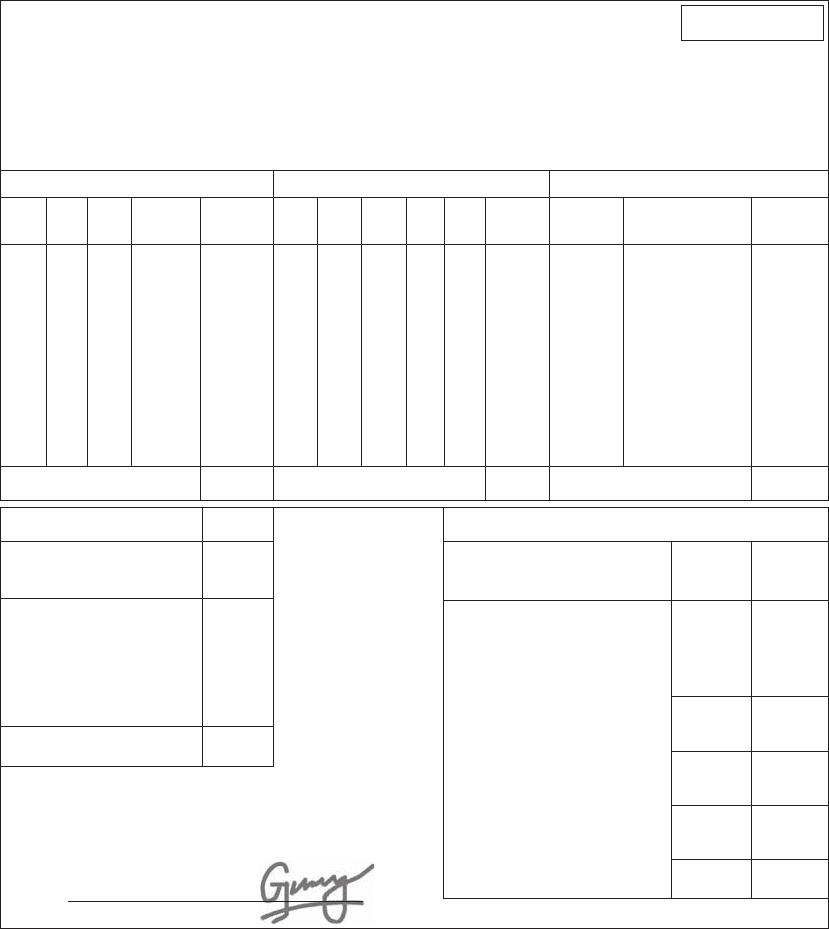
211
FUNDAMENTALS OF MANAGEMENT ACCOUNTING
SPECIFIC ORDER COSTING
Sometimes items of material might be purchased specifi cally for an individual job, with-
out the material fi rst being delivered to general stores and then requisitioned from stores
for the job. In this situation the job number must be recorded on the supplier’s invoice or
on the relevant cash records. This will ensure that the correct job is charged with the cost
of the material purchased.
(c) Direct expenses
Although dir
ect expenses are not as common as dir
ect material and direct labour costs, it
is still essential to analyse them and ensure that they are charged against the correct job
number.
For example, if a machine is hired to complete a particular job, then this is a direct
expense of the job. The supplier’s invoice should be coded to ensure that the expense is
Estimate no.: Job description:
JOB COST SHEET
MATERIALS PRODUCTION OVERHEADLABOUR
Job no.: 472
897 Instal shower
Model no. 5856
Date started:
15 June 20 × 6
Details: Mrs. P. Johnson
01734 692174
30 Hillside, Whyteham
Price estimate: £330
Date Date Overhead
absorption rate
Cost
ctr
Cost
£
Estimate
£
Actual
£
Hrs Rate £ £HoursValue
£
Price
£
QtyReq.
no.
Emp.
no.
15/6 15/6 3 1 10 10.006.20
134.20
3.10
Total c/f
Total c/f
Job card completed by:
EXPENSES
Description
90.00
JOB COST SUMMARY
Cost element
80.0090.00
Direct labour b/f
50.7052.06
Job profit/loss)
330.00330.00
Price estimate
279.30277.94
Total cost
13.3013.24
Admin. o/h (5%)
266.00264.70
Total production cost
36.0040.50
Production o/h b/f
230.00224.20
Total direct cost
––
Direct expenses b/f
150.00134.20
Direct materials b/f
Total c/f 40.50Total c/f
2644 12
14/6 15/6 4.504 8 10 80.00 40.509128.00128.001641 17
Figure 8.1 Job cost sheet

STUDY MATERIAL C1
212
SPECIFIC ORDER COSTING
charged to the job. Alternatively, if cash is paid, then the cash book analysis will show
the job number which is to be charged with the cost. We can see from Figure 8.1 that no
direct expenses were incurred on behalf of job number 472.
8.2.3 Attributing overhead costs to jobs
(a) Production overheads
The successful attribution of production ov
erhead costs to cost units depends on the exist-
ence of well-defi ned cost centres and appropriate absorption bases for the overhead costs of
each cost centre.
It must be possible to record accurately the units of the absorption base which are applic-
able to each job. For example if machine hours are to be used as the absorption base, then
the number of machine hours spent on each job must be recorded on the job cost sheet.
The relevant cost centre absorption rate can then be applied to produce a fair overhead
charge for the job.
The production overhead section of the job cost sheet in Figure 8.1 shows that the absorp-
tion rate is £ 4.50 per labour hour. The labour analysis shows that 9 hours were worked on
this job, therefore the amount of production overhead absorbed by the job is £ 40.50.
(b) Non-production overheads
The level of accuracy achieved in attributing costs such as selling, distribution and
administration o
verheads to jobs will depend on the lev
el of cost analysis which an organ-
isation uses.
Many organisations simply use a predetermined percentage to absorb such costs, based
on estimated levels of activity for the forthcoming period. The following example will
demonstrate how this works.
Example
A company uses a predetermined percentage of production cost to absorb distribution costs into the total cost of
its jobs. Based on historical records and an estimate of activity and expenditure levels in the forthcoming period,
they have produced the following estimates:
Estimated distribution costs to be incurred £13,300
Estimated production costs to be incurred on all jobs £190,000
Therefore, predetermined overhead absorption rate for
distribution costs £13,300/£190,000 100% 7% of production costs
The plumbing company that has produced the job cost sheet in Figure 8.1 uses a pre-
determined percentage of fi ve per cent of total production cost to absorb administration
overhead into job costs. You can see the calculations in the job cost summary on the sheet.
The use of predetermined rates will lead to the problems of under- or over-absorbed
overhead which we discussed in earlier chapters. The rates should therefore be carefully
monitored throughout the period to check that they do not require adjusting to more
accurately refl ect recent trends in costs and activity.
213
FUNDAMENTALS OF MANAGEMENT ACCOUNTING
SPECIFIC ORDER COSTING
8.2.4 A worked example
The following example will help you to practise presenting a cost analysis for a specifi c job.
Jobbing Limited manufactures precision tools to its customers ’ own specifi cations. The
manufacturing operations are divided into three cost centres: A, B and C.
An extract from the company’s budget for the forthcoming period shows the following
data:
Cost centre
Budgeted production
overhead
Basis of production overhead
absorption
A £ 38,500 22,000 machine hours
B £ 75,088 19,760 machine hours
C £ 40,964 41,800 labour hours
Job number 427 was manufactured during the period and its job cost sheet reveals the
following information relating to the job:
Direct material requisitioned £ 6,780.10
Direct material returned to stores £ 39.60
Direct labour recorded against job number 427:
Cost centre A: 146 hours at £ 4.80 per hour
Cost centre B: 39 hours at £ 5.70 per hour
Cost centre C: 279 hours at £ 6.10 per hour
Special machine hired for this job: hire cost £ 59.00
Machine hours recorded against job number 427:
Cost centre A: 411 hours
Cost centre B: 657 hours
Price quoted and charged to customer,
including delivery
£ 17,200
Jobbing Limited absorbs non-production overhead using the following predetermined
overhead absorption rates:
Administration and general overhead 10% of production cost
Selling and distribution overhead 12% of selling price
You are required to present an analysis of the total cost and profi t or loss attributable to
job number 427.
Solution
First, we need to calculate the predetermined overhead absorption rates for each of the cost
centres, using the basis indicated.
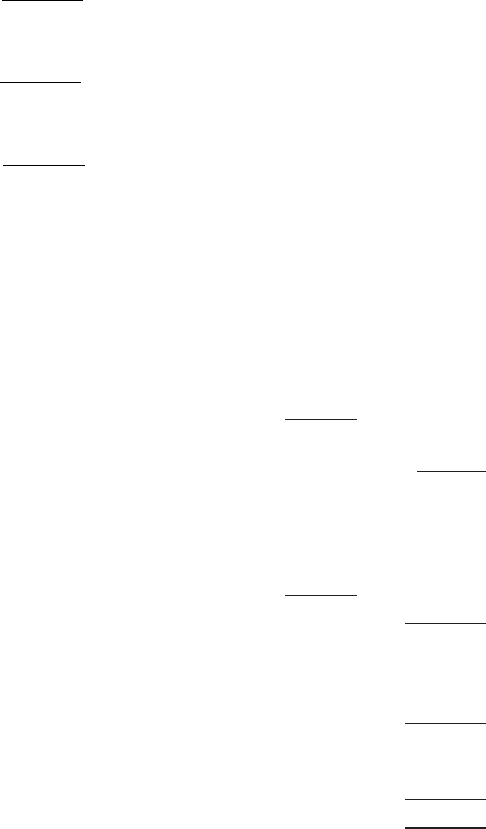
STUDY MATERIAL C1
214
SPECIFIC ORDER COSTING
Cost centre A
£38,500
£1.75 per machine hour
22 000,
Cost centre B
£75,088
£3.80 per machine hour
19 760,
Cost centre C
£40,964
£0.98 per labour hour
41800,
No
w we can prepare the cost and profi t analysis, presenting the data as clearly as possible.
Cost and profi t analysis: job number 427
£ £
Direct material (note 1) 6,740.50
Direct labour:
Cost centre A 146 hours £4.80 700.80
Cost centre B 39 hours £5.70 222.30
Cost centre C 279 hours £6.10 1,701.90
2,625.00
Direct expenses: hire of machine 59.00
Prime cost 9,424.50
Production overhead absorbed:
Cost centre A 411 hours £1.75 719.25
Cost centre B 657 hours £3.80 2,496.60
Cost centre C 279 hours £0.98 273.42
3,489.27
Total production cost 12,913.77
Administration and general overhead 1,291.38
(10% £12,913.77)
Selling and distribution overhead 2,064.00
(12% £17,200)
Total cost 16,269.15
Profi t 930.85
Selling price 17,200.00
Note 1
The fi gure for material requisitioned has been reduced by the amount of returns to give
the correct value of the materials actually used for the job.
8.2.5 Preparing ledger accounts for job costing systems
In job costing systems a separate work in progress account is maintained for each job, as
well as a summary work in progress control account for all jobs worked on in the period.
The best way to see how this is done is to work carefully through the following exercise
and ensure that you understand each entry that is made in every account. You will need to
apply the principles of integrated accounts that you learned in the previous chapter.

215
FUNDAMENTALS OF MANAGEMENT ACCOUNTING
SPECIFIC ORDER COSTING
Exercise 8.1
JC Limited operates a job costing system. All jobs are carried out on JC’s own premises
and then delivered to customers as soon as they are completed.
Direct employees are paid £ 10 per hour and production overhead is absorbed into job
costs using a predetermined absorption rate of £ 24 per hour. General overhead is charged to
the income statement on completed jobs using a rate of 12 per cent of total production cost.
Details of work done during the latest period are as follows:
Work in progress at beginning of period
Job number 308 was in progress at the beginning of the period.
J
ob number 308
Cost incurred up to beginning of period:
£
Direct material 1,790
Direct labour 960
Production overhead absorbed 2,304
Production cost incurred up to beginning of period 5,054
Activity during the period
Job numbers 309 and 310 were commenced during the period.
The following details ar
e available concerning all work done this period.
Job number: 308 309 310
Direct materials issued from stores £ 169 £ 2,153 £ 452
Excess materials returned to stores – £ 23 –
Direct labour hours worked 82 53 28
Status of job at the end of the period Completed Completed In progress
Invoice value £ 9,900 £ 6,870 –
Cost of material transferred from job 309 to job 310 £ 43
Production overhead cost incurred on credit £ 4,590
General overhead cost incurred on credit £ 1,312
Requirements
(a) Prepare the ledger account for the period for each job, showing the production cost of
sales transferred on completed jobs.
(b) Prepare the following accounts for the period:
●
work in progress control
●
production overhead control
●
general overhead control
●
overhead under- or over-absorbed control
●
income statement
(c) Calculate the profi t on each of the completed jobs.
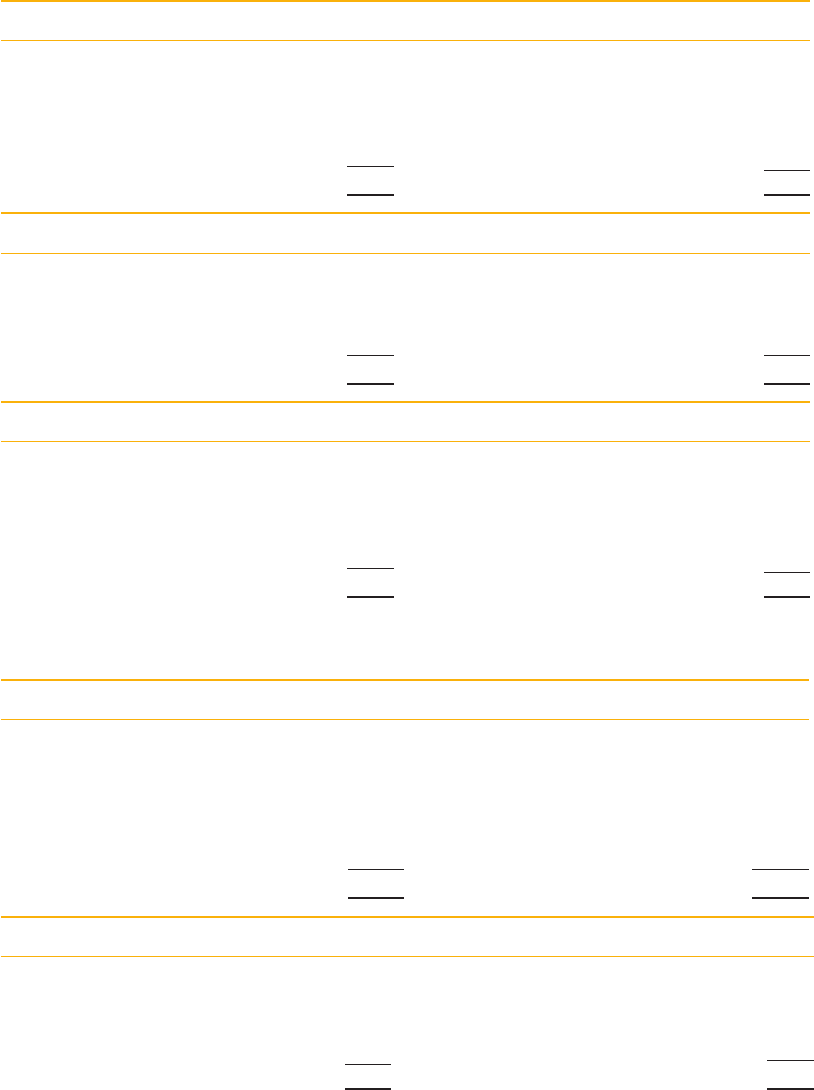
STUDY MATERIAL C1
216
SPECIFIC ORDER COSTING
Solution
(a) The fi gures in brackets refer to the explanatory notes below the accounts.
Job 308
£ £
Balance b/f (1) 5,054 Production cost of sales 8,011
Material stores 169
Wages control (82 £10) 820
Production overhead (82 £24) 1,968
8,011 8,011
Job 309
£ £
Material stores 2,153 Material stores (2) 23
Wages control (53 £10) 530 Job 310 (3) 43
Production overhead (53 £24) 1,272 Production cost of sales 3,889
3,955 3,955
Job 310
£ £
Job 309 (3) 43 Balance c/f (4) 1,447
Material stores 452
Wages control (28 £10) 280
Production overhead (28 £24) 672
1,447 1,447
(b)
Work in progress control
£ £
Balance b/f (1) 5,054 Material stores control (2) 23
Material stores control (5) 2,774 Production cost of sales to
income statement (6)
11,900
Wages control (163 hours £10) 1,630
Prod’n o’head control (163 £24) 3,912 Balance c/f (7) 1,447
13,370 13,370
Production overhead control
£ £
Payables control (8) 4,590 Work in progress control (9) 3,912
Overhead under-/over-absorbed
control (10) 678
4,590 4,590
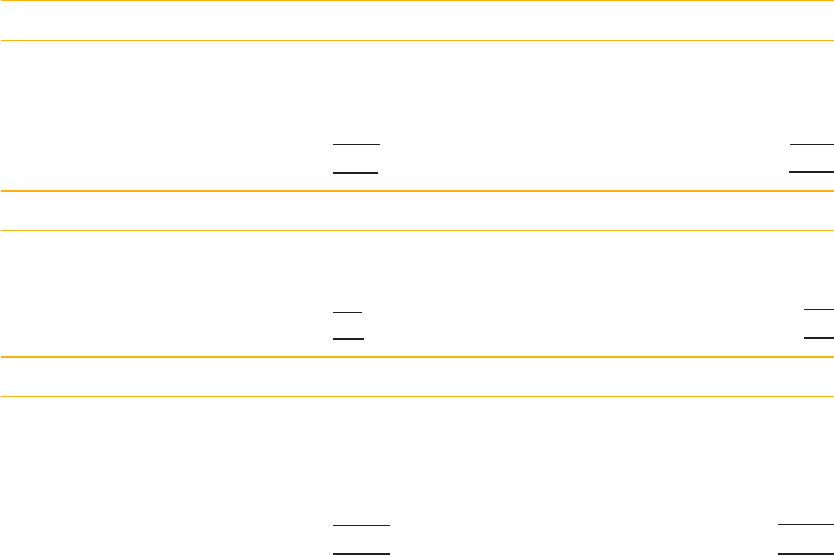
217
FUNDAMENTALS OF MANAGEMENT ACCOUNTING
SPECIFIC ORDER COSTING
General overhead control
£ £
Payables control (8) 1,312 General overhead cost to
income statement (11)
1,428
Overhead under-/over-absorbed
control (10)
116
1,428 1,428
Overhead under-/over-absorbed control
£ £
Production overhead control (10) 678 General overhead control (10) 116
Income statement 562
678 678
Income statement
£ £
Production cost of sales (6) 11,900 Sales (9,900 6,870) 16,770
General overhead control (11) 1,428
Under-absorbed overhead 562
Profi t for the period 2,880
16,770 16,770
Notes
1. The cost of the opening work in progr
ess is shown as a brought forward balance in the
individual job account and in the work in progress control account.
2. The cost of materials returned to stores is credited in the individual job account and
in the work in progress control account.
3. The cost of materials transferred between jobs is credited to the job from which the
material is transferred and debited to the job that actually uses the material.
4. Job 310 is incomplete. The production cost incurred this period is carried down as an
opening work in progress balance for next period.
5. The total cost of all materials issued is debited to the work in progress control
account.
6. The production cost of both completed jobs ( £ 3,889 £ 8,011) is transferred to the
income statement.
7. The balance carried forward to next period is the cost of the work in progress
represented by job 310.
8. The overhead cost incurred is debited in the control account.
9. The production overhead absorbed into work in progress is credited to the overhead
control account.
10. Production overhead is under-absorbed and general overhead is over-absorbed this
period.
11. The general overhead cost charged to the income statement on completed jobs
12% £ (3,889 8,011) £ 1,428
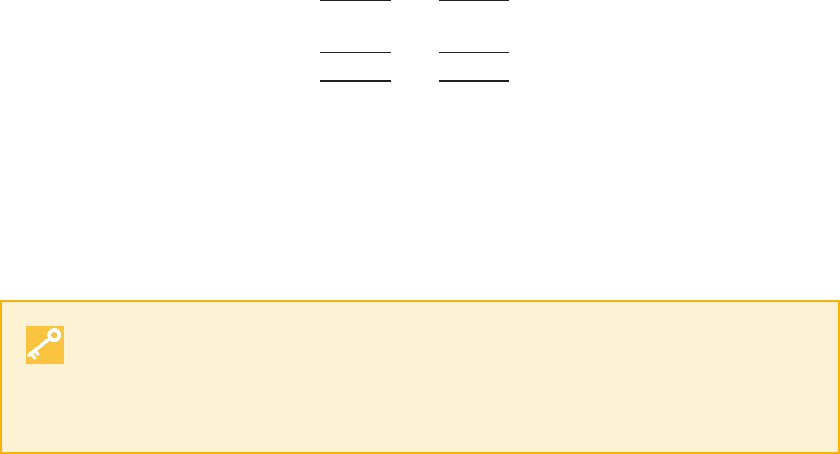
STUDY MATERIAL C1
218
SPECIFIC ORDER COSTING
(c)
Job 308 Job 309
£ £
Production cost 8,011.00 3,889.00
General overhead absorbed at 12% 961.32 466.68
8,972.32 4,355.68
Invoice value 9,900.00 6,870.00
Profi t 927.68 2,514.32
The total profi t on the two jobs is £ 3,442. The difference of £ 562 between this total and the
profi t shown in the income statement is the result of the under-absorbed overhead of £ 562.
8.3 Batch costing
The CIMA Terminology defi nes a batch as a ‘ group of similar units which
maintains its identity throughout one or more stages of production and is
treated as a cost unit ’ . Examples include a batch of manufactured shoes or a batch of
programmes printed for a local fete.
You can probably see that a batch is very similar in nature to the jobs which we have been
studying so far in this chapter. It is a separately identifi able cost unit for which it is possible
to collect and monitor the costs.
The job costing method can therefore be applied in costing batches. The only difference
is that a number of items are being costed together as a single unit, instead of a single item
or service.
Once the cost of the batch has been determined, the cost per item within the batch can
be calculated by dividing the total cost by the number of items produced.
Batch costing can be applied in many situations, including the manufacture of furni-
ture, clothing and components. It can also be applied when manufacturing is carried out
for the organisation’s own internal purposes, for example, in the production of a batch of
components to be used in production.
8.3.1 Example: batch costing
Needlecraft Limited makes hand embroidered sweat shirts to customer specifi cations.
The following detail is available from the company’s budget.
Cost centre Budgeted overheads Budgeted activity
Cutting and sewing £ 93,000 37,200 machine hours
Embroidering and packing £ 64,000 16,000 direct labour hours
Administration, selling and distribution overhead is absorbed into batch costs at a rate
of 8 per cent of total production cost. Selling prices are set to achieve a rate of return of
15 per cent of the selling price.
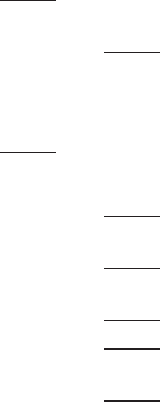
219
FUNDAMENTALS OF MANAGEMENT ACCOUNTING
SPECIFIC ORDER COSTING
An order for 45 shirts, Batch No. 92, has been produced for Shaldene Community
Choir. Details of activity on this batch are as follows:
Direct materials £ 113.90
Direct labour
Cutting and sewing 0.5 labour hours at £ 9 per hour £ 4.50
Embroidering and packing 29 labour hours at £ 11 per hour £ 319.00
Machine hours worked in cutting and sewing 2
Fee paid to designer of logo for sweat shirts £ 140.00
Required
Calculate the selling price per shirt in Batch No. 92.
Solution
Batch No. 92
£ £
Direct material 113.90
Direct labour:
Cutting and sewing 4.50
Embroidering and packing 319.00
323.50
Direct expense: design costs 140.00
Total direct cost 577.40
Production overhead absorbed:
Cutting and sewing (W l ) 2 machine hours £2.50 5.00
Embroidering and packing (W1) 29 labour
hours £ 4
116.00
121.00
Total production cost 698.40
Administration, etc. overhead £698.40 8% 55.87
Total cost 754.27
Profi t margin 15/85 £754.27 133.11
Total selling price of batch 887.38
Selling price per shirt £887.38/45 £19.72
Workings
Calculation of production overhead absorption rates:
Cutting and sewing £ 93,000/37,200 £ 2.50 per machine hour
Embroidering and packing £ 64,000/16,000 £ 4 per direct labour hour
